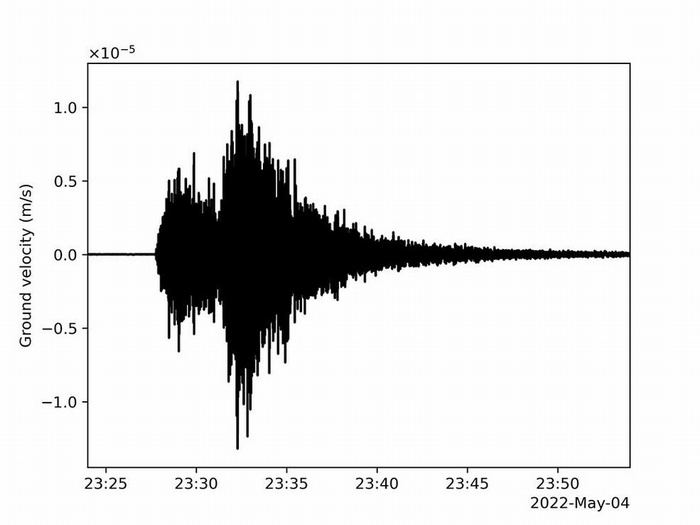InSight has recorded over 1,300 quakes to date, but nothing like the magnitude 5 temblor that occurred on May 4, 2022. That is a medium-sized earthquake on Earth, they happen 5 times each day, but it is a size researchers only hoped to get during this mission on Mars.

This seismogram shows the largest quake ever detected on another planet. Estimated at magnitude 5, this quake was discovered by NASA’s InSight lander on May 4, 2022, the 1,222 Martian day, or sol, of the mission. Credits: NASA/JPL-Caltech
This may be the last reading for a few months. As InSight’s location on Mars enters winter, there’s more dust in the air, reducing available sunlight. On May 7, 2022, the lander’s available energy fell just below the limit that triggers safe mode, where the spacecraft suspends all but the most essential functions. This reaction is designed to protect the lander and may occur again as available power slowly decreases.

This image shows InSight’s domed Wind and Thermal Shield, which covers its seismometer, called Seismic Experiment for Interior Structure, or SEIS.
Credits: NASA/JPL-Caltech





Comments